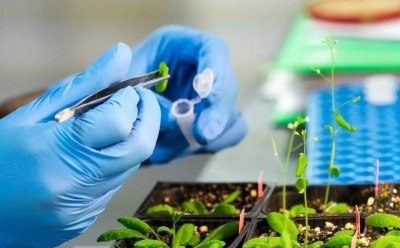Natural Products for Research and Discovery

Natural products are a valuable resource for biochemical research and drug discovery, offering a variety of structural diversity and biological activities that can be used to identify new targets, develop new therapies, and understand complex biological mechanisms. Our natural products bridge ancient wisdom with modern research, drawing inspiration from Indian Ayurvedic medicine, traditional Chinese medicine, and complementary and alternative medicine (CAM). Our products delve deep into the world of bioactive natural compounds, including alkaloids, flavonoids, glycosides, polyphenols, and more. These compounds possess a wide range of properties, such as antioxidant, antifungal, antibacterial, anti-inflammatory, antiviral, hepatoprotective, and neuroprotective activities. This empowers your research in diverse fields, including cancer, diabetes, inflammation, cardiovascular health, and beyond.
We focus on unraveling phytochemical interactions in cellular activities, creating a bridge between centuries-old herbal remedies and cutting-edge integrative medicine. Embark on a journey of discovery with us, exploring how these natural compounds can contribute to metabolomics, phytochemical, pharmaceutical, and drug discovery research. Shape the future of scientific research by delving into our extensive portfolio of high-quality natural products. Uncover valuable insights in your chosen therapeutic area with our carefully isolated and purified compounds from diverse natural sources.
Products
Products
Natural products, originating from living organisms, play pivotal roles in biology and diverse applications in medicine and industry. Plant metabolites, stemming from metabolic processes, encompass primary (growth-related) and secondary (specialized) types. Primary metabolites, e.g., carbohydrates, proteins, lipids, and nucleic acids, are essential for development. Secondary metabolites, like coumarins, iridoids, lignans, phenols, and terpenes (including mono-, di-, tri- and sesqui-terpenoids), offer benefits like defense and attraction. Notably, natural plant metabolites, prevalent throughout plants, hold multifaceted biological significance. They are a crucial resource for biomedical and biochemical research, propelling progress in pharmaceuticals, supplements, and functional foods.
Natural products have emerged as potent inhibitors of pivotal biological processes, exerting their influence on critical facets like enzyme activity, receptor signaling, and the intricate regulation of cell growth and division. Their diverse and multifaceted molecular mechanisms make them indispensable tools in the quest to discover the intricate biological pathways and explore innovative therapeutic interventions.
Natural products hold immense importance in diverse therapeutic research areas. We offer a vast reservoir of compounds with the potential for anticancer, antidiabetic, and potent anti-inflammatory activities. In the area of infectious diseases, they serve as natural antibiotics, antifungals, and antimicrobials, combating pathogens effectively. Their influence extends to cardio and hepatoprotectives, enhancing heart and liver health. Moreover, natural antioxidants contribute to overall well-being. These compounds often serve as the basis for innovative drug discovery, offering novel solutions to complex health challenges. Harnessing the inherent power of nature, natural products play a key role in shaping the future of drug discovery.
Related Resources
- Article: Dietary Antioxidants
Antioxidants protect biological systems from oxidative damage produced by oxygen-containing free radicals and from redoxactive transition metal ions such as iron, copper, and cadmium.
To continue reading please sign in or create an account.
Don't Have An Account?